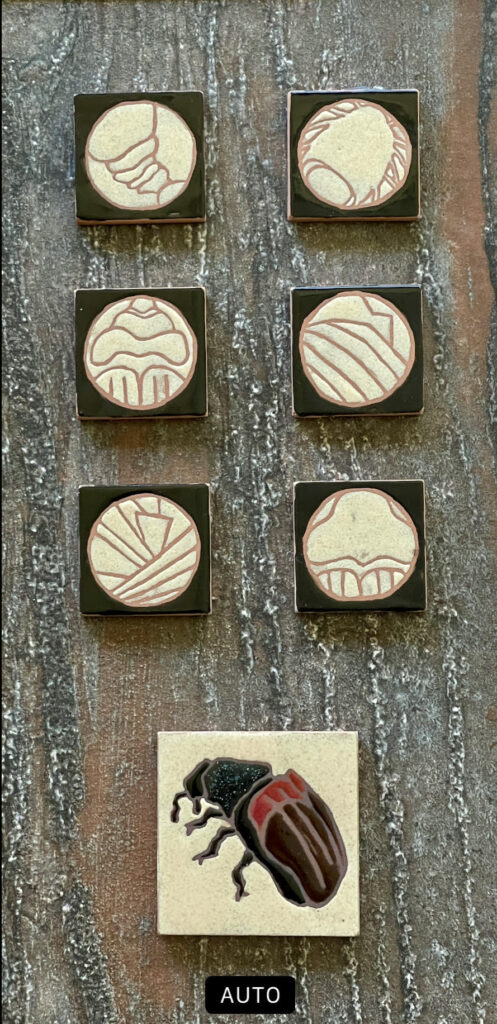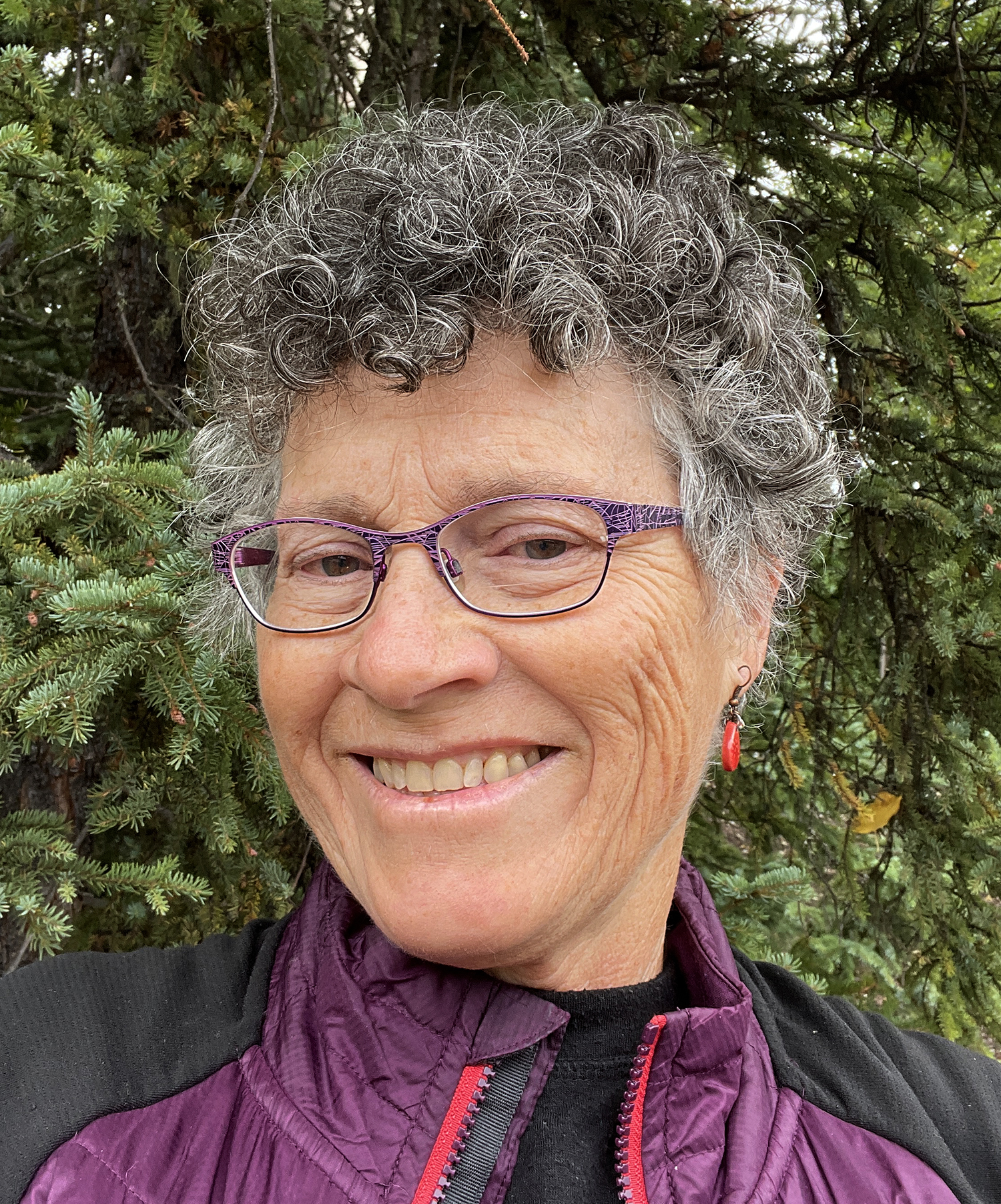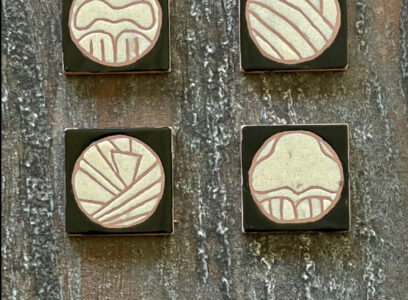Mary Bee Kaufman

Destruction and Beauty
The closer we get to our subject the more abstract it often becomes. Form loses pictorial representation and morphs into a landscape of organic shape and design. Minute structures allow us to connect with the essential nature, the constitution of the thing.
This journey began in Robin Andrews’ lab with microscopes provided to observe mites. Mycetophagous mites feed on fungi associated with bark beetle stressed spruce trees. They are phoretic, using beetles to disperse or migrate between trees.
When Ken Severin provided the opportunity to use the scanning electron microscope (SEM) and look more closely at our subject, I chose the spruce bark beetle. The specimen was provided by Derek Sikes, Curator of the University of Alaska Museum Insect Collection.
On the beetle’s surface, the overlapping juxtaposition of patterns created a new terrain filled with dynamic contours. A mite had anchored itself to the beetle. In the scale of micrometers, the oval body, idiosoma, of the mite became a massive attachment.
Using the Hausle-Johnson studio, I began working with ceramic tiles, each tile an element from the SEM view. I also created a series of tiles from my photographs and sketches of active beetles in the field. Although the beetles are quite fragile, the permanence of tile represents the long lasting effects of the outbreak.
The SEM designs are influenced by the following:
Top Left: Antennae
Mid Left: Head
Base Left: Prothoracic leg
Top Right: Coxa
Mid Right: Pronotal disc
Mary Bee Kaufman
Mary Bee Kaufman documents the natural world of Alaska through photography, painting, and handmade books. She creates art on location, developing intimate relationships with the landscape. Field studies become a part of three dimensional works. For over 36 years, she has lived in the boreal forest as a naturalist guide and art instructor. Her work is in public and private collections, including the Pratt Museum in Homer and the Alaska State Museum.


